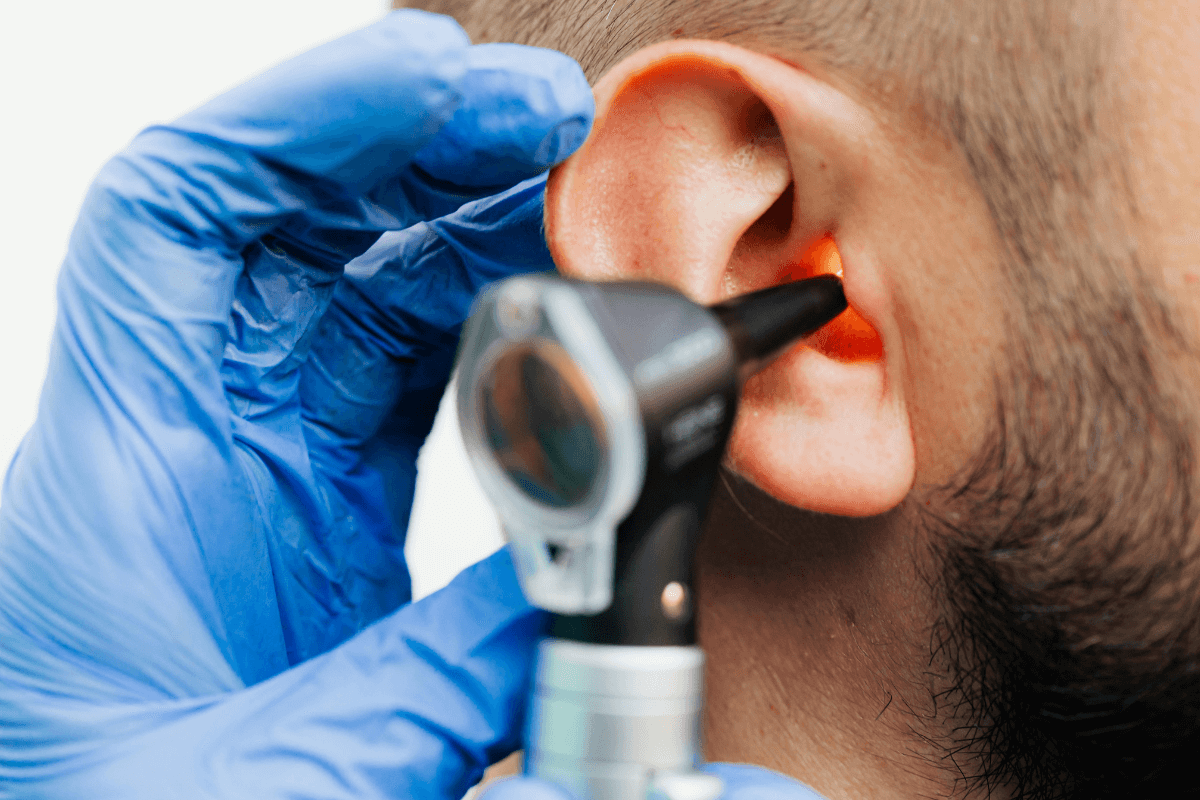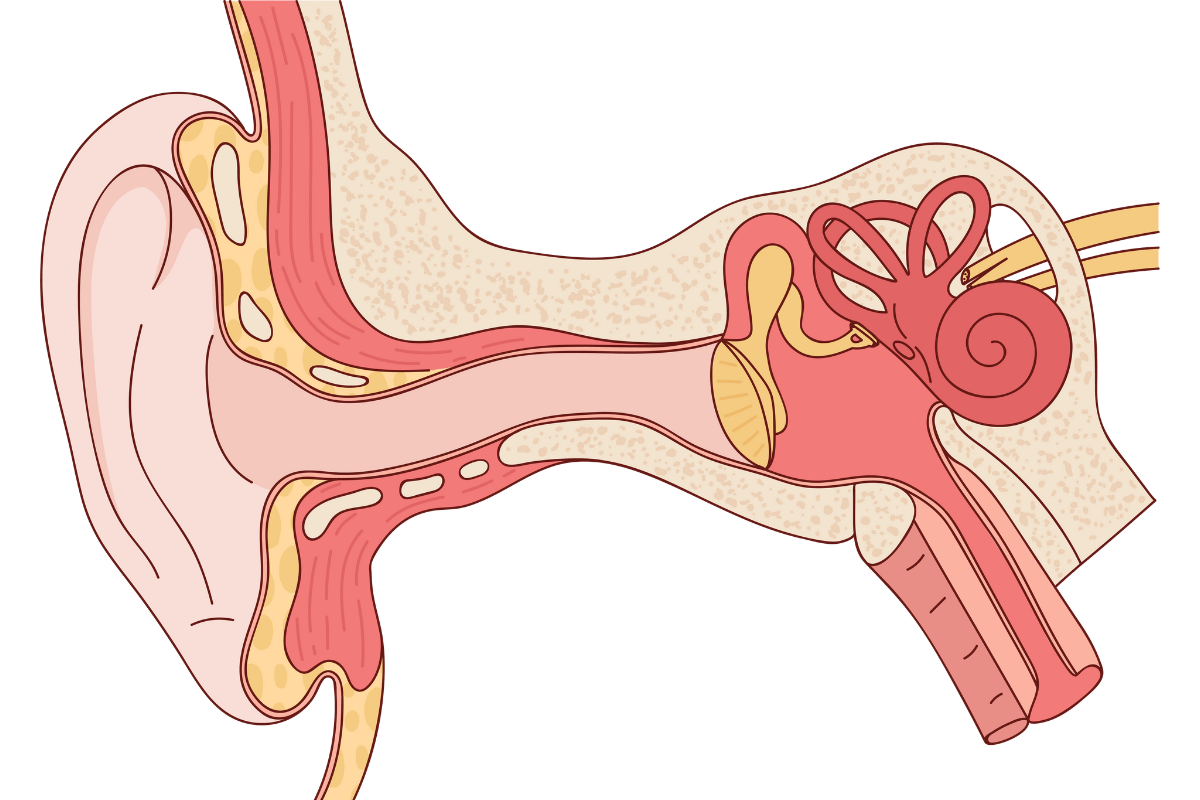Understanding and protecting hearing: a complete guide
Hearing loss directly impacts health, cognitive function, and well-being. Understanding noise exposure, preventative hearing protection, and sound acoustic design helps prevent damage and improve focus, peace, and productivity. By integrating conscious noise reduction and acoustic solutions, healthier living and working environments are created that support human well-being.

Our ability to hear connects us to the world in ways we often take for granted; from the laughs of loved ones to the subtle sounds that help us navigate our daily environment. Yet hearing loss affects millions of people worldwide, many of them preventable with the right knowledge and protective measures.
Understanding how hearing works, recognizing the risks of noise exposure, and creating healthier acoustic environments can protect this vital sense for years to come. Whether you're concerned about your own hearing health or designing spaces that support the wellbeing of others, this guide provides the insights you need.
How hearing works and how sound affects us
The journey from sound wave to perception
Hearing is a remarkable process that transforms invisible vibrations in the air into the rich tapestry of sounds we experience. This complex journey involves three main parts of the ear that work together in harmony:
It outer ear acts as a natural sound collector. The visible part of your ear (the auricle) captures sound waves and guides them through the ear canal, just like a satellite dish bundles radio signals.
In the middle ear Sound waves hit the eardrum, causing it to vibrate. These vibrations are then amplified by three tiny bones with memorable names: the hammer (malleus), the anvil (incus), and the stirrup (stapes). This amplification system is crucial; it prepares the sound energy for the fluid-filled environment of the inner ear.
It inner ear houses the cochlea, a cochlea-shaped structure that contains thousands of microscopic hair cells. These delicate sensors convert mechanical vibrations into electrical signals that travel via the auditory nerve to the brain's auditory cortex. Here, the brain sorts, processes, and interprets these signals as the sounds we recognize and understand.

More than hearing: How sound affects our wellbeing
Sound doesn't just enable us to hear, it profoundly affects our physical and mental health. Research shows that noise exposure can lead to increased blood pressure, increased stress hormones, and even heart disease. In workplaces and schools, excessive noise disrupts concentration, hampers communication and can reduce productivity by up to 66%.
The effects extend to sleep quality, cognitive functions, and overall quality of life. Understanding these connections helps explain why acoustic design is not just about comfort, but about creating environments that support human health and well-being.
What is too loud? Understanding Decibel Levels
The decibel scale: More than numbers
Sound intensity is measured in decibels (dB), but this is not a simple linear scale. Each increase of 10 dB represents a tenfold increase in sound intensity. This means that a 20 dB sound is 100 times more intense than a 0 dB sound, and a 30 dB sound is 1,000 times more intense.
Everyday noises and their impact
Very quiet to moderate (0-60 dB): These levels are generally safe for unrestricted exposure.
- Whispering or rustling leaves: 30 dB.
- Refrigerator that buzzes: 40 dB.
- Normal call: 60 dB
Loud to annoying (60-80 dB): Although not usually dangerous, prolonged exposure at the higher end of this range can cause stress and fatigue.
- Urban traffic: 70 dB
- Vacuum cleaner: 80 dB
Very loud and potentially harmful (85+ dB): This is where hearing protection becomes essential.
- Urban traffic pressure: 85 dB.
- Power tools or motorcycles: 90-95 dB.
- Music at maximum volume: 100 dB
- Rock concerts: 110 dB.
Painful and dangerous (120-140+ dB): These noises can cause immediate, permanent hearing damage.
- Ambulance sirens: 120 dB
- Plane takeoff or shot: 140 dB.
The most important threshold to remember is 85 dB - sounds at or above this level can cause hearing damage during prolonged exposure.

The hidden risks of noise: Hearing loss, tinnitus, and cognitive decline
Noise-Induced Hearing Loss: An Avoidable Tragedy
Noise-induced hearing loss (NIHL) occurs when exposure to loud noises damages the delicate hair cells in the inner ear. Unlike other parts of our body, these hair cells cannot regenerate in humans; once damaged or destroyed, the hearing loss is permanent.
NIHL can happen in two ways: sudden damage from explosive sounds such as shots, or gradual damage from chronic exposure to noisy environments. Up to 24% of U.S. adults under 70 show signs of NIHL, making it one of the most common preventable health problems.
Tinnitus: The Sound of Lost Silence
Tinnitus (often described as ringing, buzzing, or roaring sounds that aren't actually there) affects 10-25% of adults. Although the exact mechanisms are not fully understood, leading theories suggest that tinnitus originates in the brain's auditory cortex as it tries to compensate for damaged hearing pathways.
Common triggers include noise exposure, certain medications, and head or neck injuries. While there is no cure, symptoms can be managed through sound therapy, behavioral approaches, and treatments that address related issues such as sleep disorders and anxiety.

The surprising link with cognitive health
Recent research reveals a strong connection between hearing loss and cognitive decline. Studies show that older individuals with hearing loss experience faster cognitive decline and have increased rates of developing dementia compared to those with normal hearing.
Several factors can explain this connection:
- Increased cognitive load: When hearing is impaired, the brain works harder to process sound, diverting cognitive resources away from other tasks such as memory and reasoning.
- Social isolation: Difficulty communicating often causes people to withdraw from social activities, which is a known risk factor for cognitive decline.
- Brain changes: Hearing loss can affect brain structure because auditory pathways are closely linked to cognitive centers.
This research underlines that protecting hearing isn't just about maintaining our ability to hear, it's about maintaining overall cognitive health as we age.

Preventative measures that everyone should know
Safe exposure guidelines
The Centers for Disease Control and Prevention (CDC) states that noise above 70 decibels may begin to damage hearing over extended periods of time. The National Institute for Occupational Safety and Health (NIOSH) considers 85 dB to be the threshold where hearing protection becomes necessary.
The relationship between volume and safe exposure time is crucial to understand:
- 90 dB: Up to 8 hours per day.
- 95 dB: Up to 47 minutes per day.
- 100 dB: Up to 15 minutes per day.
- 115 dB: Up to 30 seconds per day.
Simple steps for hearing protection
- Decrease volume: When using personal listening devices, follow the 60/60 rule: no more than 60% volume for no more than 60 minutes at a time.
- Increase distance: Move away from loud sources of noise whenever possible. Sound intensity decreases rapidly with distance.
- Use hearing protection: Wear earplugs or earmuffs while doing noisy activities such as using power tools, attending concerts, or mowing the lawn. For foam plugs to be effective, remember to roll, pull, and keep them in place.
- Monitor your environment: Use sound level meter apps on your smartphone to become more aware of noise levels around you.
- Protect children: Young people are particularly vulnerable to noise-induced hearing loss but may not recognize the risks. Make sure children have appropriate hearing protection in noisy environments.

Workplace hearing preservation
Many workplaces are required to implement hearing preservation programs when noise exposure reaches 85 dB over an 8-hour period. These programs include regular noise monitoring, annual hearing tests, providing hearing protection, employee training, and maintaining exposure records.
Even in offices, acoustic design plays a crucial role in creating healthier working environments and reducing the cognitive load associated with processing background noise.
Designing for Health: Acoustic Solutions That Make a Difference
The science of sound absorption
Creating healthier acoustic environments requires understanding how sound behaves in spaces. When sound waves encounter hard surfaces like concrete walls or glass windows, they bounce back, creating echoes and reverberations that can make spaces feel chaotic and stressful.
Acoustic solutions work by absorbing these sound waves instead of reflecting them. Materials such as mineral wool, PET felt or specialized foams capture sound energy and convert it into heat, drastically reducing disruptive echoes and ambient noise levels.
Types of acoustic solutions
Acoustic panels: Wall- and ceiling-mounted panels can reach Noise Reduction Coefficients (NRC) of 0.90, which means they absorb 90% of the sound energy that hits them. Modern panels are available in countless colors, textures and designs, allowing them to be both functional and aesthetic elements.
Acoustic furniture: Multifunctional pieces such as high-back chairs, sitting areas and sound-absorbing ottomans create quieter zones while serving practical purposes. This approach is particularly valuable in open offices and collaborative spaces.
Acoustic partitions: Free-standing or hanging screens provide both visual and acoustic separation, reducing sound transmission between workstations while maintaining the open feel that many modern spaces require.
Acoustic lighting: These innovative luminaires combine lighting with sound absorption and offer dual functionality that seamlessly integrates into any design scheme.

Benefits beyond noise reduction
Well-designed acoustic environments offer numerous benefits:
- Improved concentration: Reduced background noise ensures deeper focus and more productive work.
- Improved communication: Better speech intelligibility makes conversations clearer and more efficient.
- Reduced stress: Lower noise levels contribute to reduced cortisol production and improved well-being.
- Better sleep: In residential and healthcare environments, acoustic design supports restorative rest.
- Increased privacy: Sound masking and absorption create more confidential spaces for sensitive conversations.
Design considerations for different spaces
Offices: Focus on reducing conversational distractions while maintaining a sense of openness. Acoustic panels combined with sound-absorbing furniture can create productive environments without feeling isolated.
Schools: Classroom acoustics directly influences learning outcomes. Good acoustic design improves speech intelligibility, helps students better understand instructions, and reduces teachers' vocal strain.
Care facilities: Noise reduction in hospitals and clinics supports healing, improves sleep quality for patients, and creates more comfortable environments for both patients and staff.
Public areas: Restaurants, lobbies, and retail environments benefit from acoustic design that allows for comfortable conversations while managing the energy and atmosphere of the space.
.jpg)
Understanding and protecting our hearing requires both individual awareness and collective action. By making informed choices about noise exposure and supporting the design of healthier acoustic environments, we can preserve this precious sense while creating spaces that truly support human well-being. The sounds around us shape our daily experience... Let's ensure they contribute to health, productivity, and quality of life rather than detracting from them.
Ready to transform your space into a healthier environment?
After reading about the profound impact that sound has on our health, productivity, and well-being, you might be wondering: "How can I create a more acoustically comfortable environment in my workplace, home, or facility?"
Whether you're dealing with distracting background noise, echo-filled meeting rooms, or simply want to create spaces that support better concentration and communication, the solution starts with understanding your unique acoustic challenges.
Take the first step toward better acoustics:
Our team of acoustic experts can help you assess your space and design tailored solutions that seamlessly blend functionality with aesthetics. From sound-absorbing panels to innovative acoustic furniture, we'll work with you to create environments where people can focus, communicate clearly, and feel their best.
Contact us today for a free acoustic consultation and discover how the right acoustic design can protect hearing, enhance productivity, and transform your space into a place where well-being thrives.
Get in touch or Schedule your free consultation
FAQs
How can I tell if my workplace is too noisy?
If you need to raise your voice to have a normal conversation with someone at arm's length, the environment is likely above 85 dB and potentially harmful. Smartphone apps can provide raw noise level measurements, though professional assessment may be necessary for workplace compliance. Other warning signs include tiredness after working in space, experiencing temporary hearing changes, or having trouble concentrating due to background noise.
Can hearing loss caused by noise exposure be reversed?
Unfortunately, noise-induced hearing loss where hair cells in the inner ear are damaged is permanent and cannot currently be reversed. This is why prevention is so crucial. However, hearing aids and other assistive technologies can help manage the effects of hearing loss. Some temporary hearing changes due to short loud noise exposure can recover, but repeated exposure leads to permanent damage.
What is the difference between sound insulation and acoustic treatment?
Sound insulation aims to completely block sound from entering or leaving a space, which typically requires significant construction changes such as adding mass to walls or creating air holes. Acoustic treatment focuses on improving sound quality within a room by reducing echoes, reverb, and background noise levels. Most workplace and residential acoustic improvements involve treatment rather than sound insulation.
Are there acoustic considerations specific to older adults?
Yes, age-related hearing changes make good acoustic design even more important for older adults. They may have more difficulty distinguishing speech from background noise and may be more sensitive to reverb. Rooms that serve older populations should minimize background noise, control reverberation times, and ensure good speech intelligibility. This includes schools, care facilities, and senior communities.
How do I know if acoustic solutions are worth the investment?
The benefits of acoustic improvements extend beyond noise reduction and include increased productivity, better communication, reduced stress, and improved resident satisfaction. Many organizations are seeing returns through reduced sick leave, improved employee retention and better performance in acoustic-sensitive tasks. For specific spaces, consider running a simple resident satisfaction survey before and after acoustic improvements to measure impact.
Share this:
Transform your environment into the best version to work, learn or live in
Know what options are available for your situation in 30 minutes.






